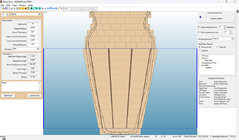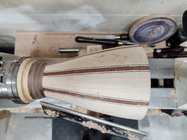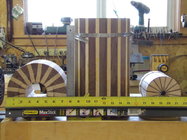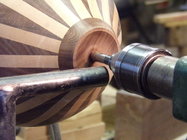With my cognitive decline issues, I can’t think this through so that it makes sense. Help is welcome. I’m having difficulty describing the issue so bear with me. This should be applicable to Staves or Segments.
While designing a vessel using staves, how does one calculate or account for the veneer thickness added between the staves, when determining the width to cut the staves? It’s a brain fog as I try to think this through.
I get the concept if I were use solid pieces. But, when I through the process of including the veneers, I can’t see it in my mind what to do.
Thanks ahead of time.
John
While designing a vessel using staves, how does one calculate or account for the veneer thickness added between the staves, when determining the width to cut the staves? It’s a brain fog as I try to think this through.
I get the concept if I were use solid pieces. But, when I through the process of including the veneers, I can’t see it in my mind what to do.
Thanks ahead of time.
John




